Home>Furniture>Kitchen Furniture>Why When I Turn My Stove Burners On Low Or Medium They Automatically Go On High
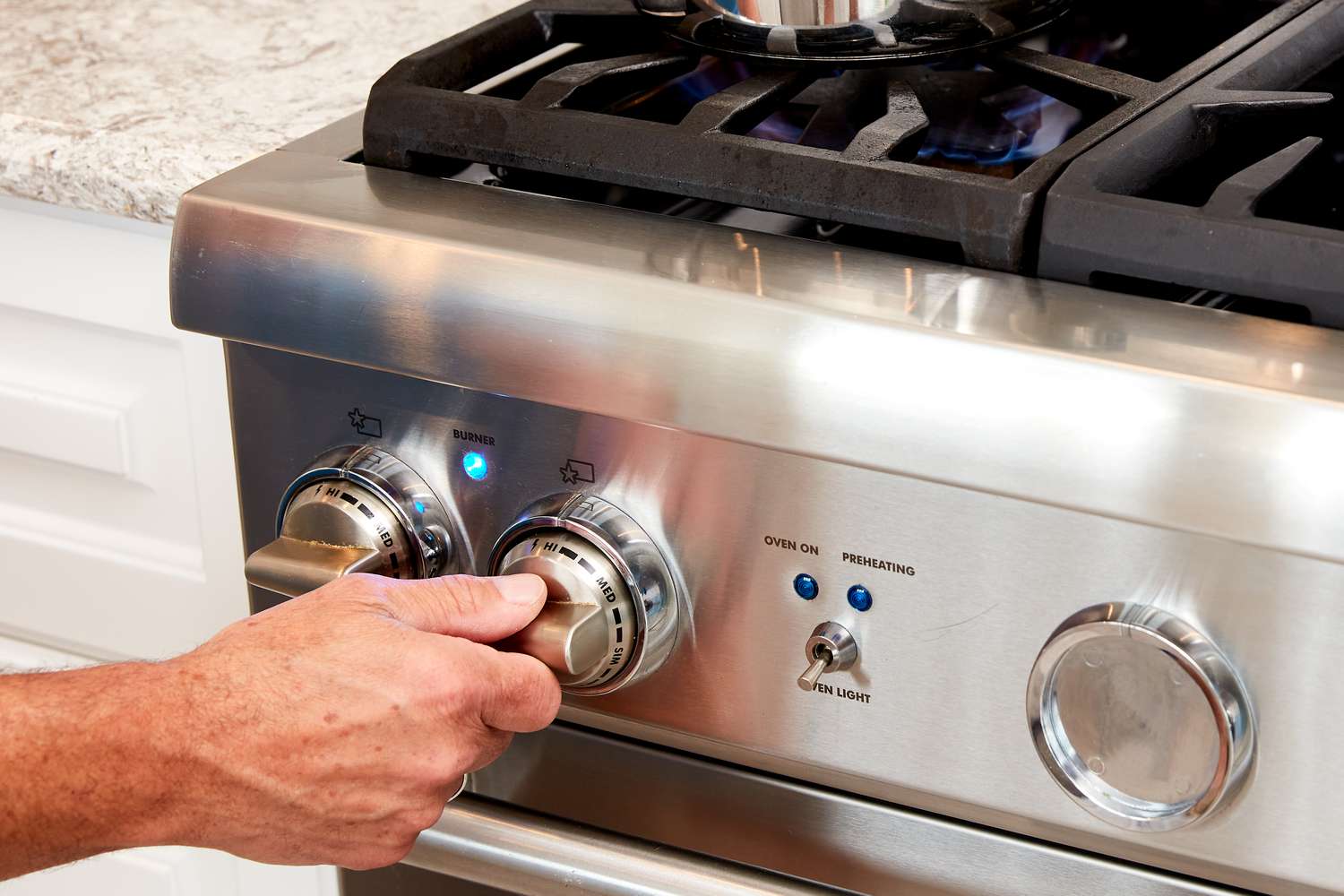

Kitchen Furniture
Why When I Turn My Stove Burners On Low Or Medium They Automatically Go On High
Modified: October 19, 2024
Find articles about why your stove burners automatically go on high when you turn them on low or medium. Expert advice and solutions to this common issue.
(Many of the links in this article redirect to a specific reviewed product. Your purchase of these products through affiliate links helps to generate commission for Storables.com, at no extra cost. Learn more)
Introduction
When it comes to cooking on a stove, it’s important to have precise control over the heat settings. However, it can be frustrating when you turn your stove burners on low or medium, only to have them automatically jump to high heat. This sudden increase in heat can not only disrupt your cooking process but also pose a safety hazard.
Understanding why your stove burners automatically go to high heat can help you troubleshoot the issue and find a solution. In this article, we will explore the possible causes behind this problem and provide some troubleshooting tips to resolve the issue.
So, if you’ve ever wondered why your stove burners seem to have a mind of their own and always go to high heat, read on to find out more.
Key Takeaways:
- Don’t let your stove take control! Troubleshoot and fix issues like burners automatically going on high by checking the control knob, inspecting the ignition system, and adjusting gas pressure.
- Keep your cool in the kitchen! Address stove burner issues with thorough troubleshooting, from testing the temperature sensor to clearing gas supply lines, for a seamless cooking experience.
Understanding Stove Burner Settings
Before delving into the possible causes for stove burners automatically going on high, it’s important to have a basic understanding of stove burner settings. Most stoves come with multiple burners, each equipped with different heat settings ranging from low to high.
Typically, stove burners have three or four adjustable settings:
- Low: The lowest heat setting, usually used for simmering or keeping food warm.
- Medium: An intermediate heat setting used for general cooking and boiling.
- High: The highest heat setting, ideal for searing and quick boiling.
- Extra High (if available): Some stoves may have an extra high heat setting for rapid boiling or stir-frying.
By turning the burner control knob, you can adjust the heat output to the desired level. However, if your stove burners automatically go to high heat when you set them to low or medium, there may be an underlying issue that needs to be addressed.
Next, let’s explore some possible causes for this frustrating problem.
Possible Causes for Stove Burners Automatically Going on High
There are several potential causes for stove burners automatically going on high when you set them to low or medium. Let’s take a look at some of the most common culprits:
- Malfunctioning Burner Control Knob: The burner control knob is responsible for regulating the heat output. If it’s faulty or worn out, it may not properly adjust the heat level, leading to the burners automatically going on high.
- Faulty Burner Ignition System: The burner ignition system, including the spark igniter or electronic ignition mechanism, could be malfunctioning. This can cause the burners to ignite at high heat regardless of the selected setting.
- Defective Temperature Sensor: Some stoves have a temperature sensor that monitors the heat level. A malfunctioning sensor may send incorrect signals to the burner control unit, causing the burners to automatically go on high.
- Improper Gas Pressure: If the gas pressure within the stove’s gas line is too high, it can cause the burners to ignite at a higher intensity than intended. This can occur due to a faulty pressure regulator or improper installation.
- Blocked Gas Supply Line: A clogged or obstructed gas supply line can disrupt the flow of gas to the burners, resulting in inconsistent heat output. This can cause the burners to default to high heat as a safety precaution.
These are just some of the potential causes for stove burners automatically going on high. Determining the exact cause requires a bit of troubleshooting. In the next section, we will discuss some solutions to address this issue and regain control over your stove burners.
Malfunctioning Burner Control Knob
The burner control knob plays a crucial role in adjusting the heat output of the stove burners. If it is malfunctioning, it can cause the burners to automatically go on high, regardless of the selected setting.
There are a few signs that indicate a malfunctioning burner control knob:
- The knob feels loose or wobbly when turned.
- The heat output does not correspond to the selected setting on the knob.
- The knob does not click into place when adjusted to different heat levels.
- The knob is visibly damaged or worn out.
If you suspect that the burner control knob is the culprit behind your stove burners automatically going on high, here are a few troubleshooting steps to follow:
- Inspect the knob: Carefully examine the knob for any visible damage or wear. If you notice any cracks or signs of deterioration, it may be time to replace it.
- Tighten the knob: If the knob feels loose or wobbly, try tightening it. Some knobs have a set screw that can be tightened to secure the knob in place.
- Clean the knob and control panel: Sometimes, dirt or debris can interfere with the proper functioning of the knob. Clean both the knob and the control panel with a mild detergent and a soft cloth to remove any buildup.
- Replace the knob: If none of the above steps resolve the issue, it may be necessary to replace the burner control knob altogether. Consult the manufacturer’s instructions or seek assistance from a professional to ensure you choose the correct replacement part.
By addressing any issues with the burner control knob, you may be able to resolve the problem of your stove burners automatically going on high. However, if the issue persists, it is advisable to move on to the next potential cause to troubleshoot further.
Faulty Burner Ignition System
The burner ignition system is responsible for igniting the gas within the stove burners. If this system is faulty, it can cause the burners to ignite at high heat, regardless of the selected setting on the burner control knob.
Here are some indicators of a faulty burner ignition system:
- The burners consistently ignite at high heat, even when set to a lower setting.
- There is no spark or ignition sound when turning the burner control knob.
- The burners take an unusually long time to ignite.
- There is a persistent gas smell when attempting to ignite the burners.
If you suspect that the burner ignition system is causing your stove burners to automatically go on high, here are some steps you can take to troubleshoot the issue:
- Check the spark igniter: Inspect the spark igniter located near the burner. Make sure it is clean and free from any dirt or debris that might be hindering its functionality. Gently clean the igniter with a soft cloth or a small brush if necessary.
- Test the ignition switch: Test the ignition switch to ensure it is properly engaging when the burner control knob is turned. Sometimes, a loose or faulty switch can result in inconsistent ignition. If necessary, consult the manufacturer’s instructions or seek professional help to replace the ignition switch.
- Inspect the electronic ignition system: If your stove has an electronic ignition system, check for any loose or damaged wires. A faulty connection can disrupt the ignition process and cause the burners to default to high heat. Again, consult the manufacturer’s instructions or seek professional assistance for any necessary repairs or replacements.
- Consider professional help: If you have tried the above steps and the issue persists, it may be best to seek help from a qualified technician. They will have the expertise to diagnose and resolve any complex issues with your burner ignition system.
By addressing any faults in the burner ignition system, you can eliminate this potential cause for your stove burners automatically going on high. However, if the problem persists, continue to the next section for further troubleshooting steps.
Defective Temperature Sensor
Some stoves are equipped with a temperature sensor that monitors the heat level and sends signals to the burner control unit. If this temperature sensor is defective or malfunctioning, it can cause the stove burners to automatically go on high, regardless of the selected setting.
Here are a few signs that suggest a defective temperature sensor:
- The stove burners consistently default to high heat, even when set to low or medium.
- The temperature displayed on the control panel does not match the actual heat output.
- The stove’s internal cooling fan runs constantly, even when not cooking.
- There are error codes or error messages displayed on the control panel.
If you suspect a defective temperature sensor is the reason behind your stove burners automatically going on high, consider the following troubleshooting steps:
- Inspect the temperature sensor: Locate the temperature sensor, which is usually positioned near the back wall of the oven or inside the stovetop. Ensure there are no visible signs of damage, such as loose wires or corrosion. If you notice any issues, it may be necessary to replace the temperature sensor.
- Test the sensor’s resistance: Using a multimeter, measure the resistance of the temperature sensor. Consult the stove’s manual or contact the manufacturer for the expected resistance value. If the measured resistance deviates significantly from the expected value, the temperature sensor may be defective and require replacement.
- Contact the manufacturer or a professional: If you are unsure about performing the above steps or if the issue persists, it is recommended to consult the manufacturer’s customer service or seek assistance from a professional technician. They will have the knowledge and expertise to diagnose and replace the defective temperature sensor if needed.
Fixing a defective temperature sensor can help resolve the issue of your stove burners automatically going on high. However, if the problem persists, proceed to the next section for further troubleshooting solutions.
Improper Gas Pressure
When it comes to stove burners, the proper gas pressure is crucial for maintaining the desired heat output. If the gas pressure is too high, it can cause the burners to ignite at a higher intensity, leading to them automatically going on high.
Here are some signs that indicate improper gas pressure:
- The stove burners consistently produce a high flame, no matter the selected heat setting.
- You notice a hissing sound or excessive gas smell when the burners are ignited.
- The stove takes longer than usual to ignite.
- Other gas appliances in your home are exhibiting similar issues.
If you suspect that improper gas pressure is causing your stove burners to automatically go on high, consider the following troubleshooting steps:
- Investigate the gas regulator: Check the gas regulator located near the gas supply line. Make sure it is properly installed and functioning correctly. If you suspect the regulator is faulty, contact a qualified technician to inspect and replace it if necessary.
- Consult a professional: Adjusting gas pressure requires specialized tools and knowledge. It is recommended to consult a professional technician who can assess and adjust the gas pressure in accordance with the manufacturer’s specifications. This ensures safety and proper functioning of the stove burners.
- Contact your gas provider: If you have tried the above steps and suspect an issue with the gas supply itself, contact your gas provider. They may need to inspect and address any potential issues with the gas line.
By addressing any problems related to the gas pressure, you can eliminate this potential cause for your stove burners automatically going on high. However, if the issue persists, continue reading for further troubleshooting solutions.
Blocked Gas Supply Line
A blocked gas supply line can disrupt the flow of gas to the stove burners, leading to inconsistent heat output and the burners automatically going on high as a safety precaution. It’s essential to check for any obstructions that may be causing this issue.
Here are some signs that indicate a blocked gas supply line:
- The flame on the burners is irregular or flickering.
- There is a noticeable decrease in the size of the flame.
- You can hear a whistling or hissing sound when gas is flowing.
- You notice a gas smell near the stove or gas supply line.
If you suspect a blocked gas supply line is the cause of your stove burners automatically going on high, consider the following troubleshooting steps:
- Inspect the gas supply line: Check the gas supply line leading to the stove. Look for any visible signs of damage, such as kinks, dents, or leaks. If you detect a gas leak, turn off the gas supply immediately and contact a professional for assistance.
- Clean the gas burner ports: The burner ports can become clogged with food debris or grease over time. Use a pin or a small, soft brush to gently clean the ports, ensuring they are clear from any obstructions.
- Clear the gas supply line: If you suspect a blockage in the gas supply line, carefully disconnect the line from the stove. Use compressed air or a pipe cleaner to clear any debris or obstructions. Ensure the gas supply line is reconnected securely.
- Consult a professional: If you are unsure about performing the above steps or if the issue persists, it is best to seek assistance from a professional technician. They have the expertise and tools to safely diagnose and clear any blockages in the gas supply line.
By addressing any blockages in the gas supply line, you can eliminate this potential cause for your stove burners automatically going on high. However, if the problem persists, it may require further investigation or professional assistance.
Check the stove’s control knobs to ensure they are properly set to the desired heat level. If the knobs are in the correct position and the burners still go on high, there may be an issue with the stove’s internal mechanisms that requires professional inspection and repair.
Troubleshooting and Solutions
If you’re experiencing the issue of your stove burners automatically going on high, despite selecting a low or medium heat setting, it can be frustrating. To pinpoint and resolve the problem, it’s important to follow some troubleshooting steps. Here are some solutions to help you regain control over your stove burners:
- Checking and Replacing the Burner Control Knob: Inspect the burner control knob for any visible damage or wear. If it’s loose, wobbly, or not clicking into place, consider tightening it or replacing it altogether.
- Inspecting and Repairing the Burner Ignition System: Check the spark igniter or electronic ignition system for any dirt or damage. Clean the igniter, test the ignition switch, and inspect the electronic ignition system for loose or damaged wires.
- Testing and Replacing the Temperature Sensor: Examine the temperature sensor for any signs of damage or corrosion. Test its resistance using a multimeter and consider replacing it if it deviates significantly from the expected value.
- Adjusting the Gas Pressure: Inspect the gas regulator and ensure it is properly installed. Consult a professional technician to assess and adjust the gas pressure according to the manufacturer’s specifications.
- Clearing the Gas Supply Line: Check the gas supply line for any obstructions or damage. Clean the burner ports and clear any debris or blockages in the gas supply line with compressed air or a pipe cleaner. Ensure the line is securely reconnected.
It’s important to note that troubleshooting and resolving the issue may vary depending on the specific make and model of your stove. Consult the manufacturer’s instructions or seek professional assistance if necessary.
Remember to prioritize safety throughout the troubleshooting process. If you detect a gas leak or feel unsure about performing any troubleshooting steps, it’s best to contact a professional technician for assistance.
By systematically troubleshooting and addressing the potential causes, you can find the solution to the problem of your stove burners automatically going on high. Resolving this issue will not only make your cooking experience more enjoyable but also ensure the safety and proper functioning of your stove.
If the problem persists despite your troubleshooting efforts, it may be necessary to contact a professional technician for a thorough inspection and repair of your stove.
Checking and Replacing the Burner Control Knob
The burner control knob is a vital component in regulating the heat output of your stove burners. If it is malfunctioning, it can cause the burners to automatically go on high, even when set to low or medium heat settings.
Here are the steps to check and potentially replace the burner control knob:
- Inspect the knob: Examine the burner control knob for any visible damage or wear. Look for cracks, chips, or signs of deterioration. If you notice any issues, it is recommended to replace the knob to ensure proper functioning.
- Tighten the knob: If the knob feels loose or wobbly when turned, try tightening it. Some knobs have a set screw that can be tightened using a screwdriver. Be careful not to overtighten, as it may cause damage.
- Clean the knob and control panel: Sometimes, dirt or debris can accumulate around the knob and interfere with its smooth operation. Use a mild detergent and a soft cloth to clean the knob and the surrounding control panel. This helps to remove any buildup that may hinder the proper functioning of the knob.
- Replace the knob: If the above steps do not resolve the issue, it may be necessary to replace the burner control knob. Consult the manufacturer’s instructions or seek assistance from a professional to ensure you choose the correct replacement part. Follow the manufacturer’s guidelines to properly install the new knob.
By checking and potentially replacing the burner control knob, you can eliminate a malfunctioning knob as the cause of your stove burners automatically going on high. However, if the problem persists, it is essential to move on to the next troubleshooting step to identify and address the underlying issue.
Inspecting and Repairing the Burner Ignition System
The burner ignition system is responsible for igniting the gas in your stove burners. A faulty ignition system can cause the burners to automatically go on high, regardless of the selected heat setting. Here are the steps to inspect and repair the burner ignition system:
- Check the spark igniter: Locate the spark igniter near the burner. Ensure that it is clean and free from any dirt, grease, or debris that may hinder its functionality. Use a soft cloth or a small brush to gently clean the igniter if necessary.
- Test the ignition switch: Turn the burner control knob to ignite the burner while listening for the sound of the ignition. If you do not hear a spark or clicking sound, it may indicate a faulty ignition switch. In this case, consult the manufacturer’s instructions or seek professional help to repair or replace the switch.
- Inspect the electronic ignition system: If your stove has an electronic ignition system, check for any loose or damaged wires connected to the igniter module. A faulty connection can disrupt the ignition process and cause the burners to default to high heat. Again, consult the manufacturer’s instructions or seek professional assistance for any necessary repairs or replacements.
- Check the grounding wire: Ensure that the grounding wire connected to the burner and the igniter is securely attached and not damaged. A loose or damaged grounding wire can affect the proper functioning of the ignition system.
- Consider professional help: If you have completed the above steps and are still experiencing issues with the burner ignition system, it may be necessary to seek help from a professional technician. They will have the expertise and tools to diagnose and repair any complex problems with the ignition system.
By inspecting and repairing the burner ignition system, you can eliminate issues related to the ignition process as the cause of your stove burners automatically going on high. However, if the problem persists, it is essential to continue troubleshooting to identify and resolve the underlying issue.
Testing and Replacing the Temperature Sensor
The temperature sensor in your stove monitors the heat level and sends signals to the burner control unit. If it is defective or malfunctioning, it can cause the stove burners to automatically go on high, irrespective of the selected heat setting. Here are the steps to test and replace the temperature sensor:
- Locate the temperature sensor: The temperature sensor is typically located near the back wall of the oven or inside the stovetop. Consult the manufacturer’s instructions or the stove’s manual to find the exact location.
- Inspect the temperature sensor: Visual inspection is the first step to determine if the temperature sensor is damaged. Look for any signs of physical damage or corrosion. If the sensor appears damaged, it is likely the cause of the issue.
- Test the sensor’s resistance: To test the temperature sensor, you will need a multimeter. Set the multimeter to the resistance (ohms) setting and touch the probes to the sensor’s terminals. Compare the measured resistance to the expected resistance value specified by the manufacturer. If the measured resistance deviates significantly from the expected value, it indicates a faulty temperature sensor that needs to be replaced.
- Replace the temperature sensor: If the temperature sensor is confirmed to be defective, it is essential to replace it. Consult the manufacturer’s instructions or seek professional assistance to ensure you choose the correct replacement part and follow proper installation procedures.
- Recheck the functionality: After replacing the temperature sensor, test the stove burners at different heat settings to ensure the issue of them automatically going on high has been resolved.
By testing and replacing the temperature sensor, you can eliminate any malfunctioning sensor as the cause of your stove burners automatically going on high. However, if the problem persists, it is important to proceed with further troubleshooting steps to identify and resolve the underlying issue.
Adjusting the Gas Pressure
Proper gas pressure is essential for achieving the desired heat output on your stove burners. If the gas pressure is too high, it can cause the burners to automatically go on high, regardless of the selected heat setting. Here are the steps to adjust the gas pressure:
- Locate the gas regulator: The gas regulator is usually located near the gas supply line leading to your stove. It is responsible for regulating the pressure of the gas flowing into the burners.
- Inspect the gas regulator: Check the gas regulator for any visible signs of damage or wear. Ensure that it is securely connected to the gas supply line.
- Consult the manufacturer’s instructions: Refer to the manufacturer’s instructions or the stove’s manual to determine the proper gas pressure range for your specific stove model. This information will help you determine whether the gas pressure needs adjustment.
- Adjust the gas pressure: Gas pressure adjustment typically requires a professional technician with specialized tools. It is recommended to consult a professional who can assess and adjust the gas pressure according to the manufacturer’s specifications. This ensures safety and optimal functioning of the stove burners.
- Monitor the burner performance: After the gas pressure has been adjusted, observe the performance of the stove burners at different heat settings. Ensure that they ignite and maintain the desired heat without automatically going on high.
By adjusting the gas pressure, you can eliminate improper gas pressure as the cause of your stove burners automatically going on high. However, gas pressure adjustment requires expertise and specialized tools, so it is best to consult a professional technician to ensure safe and accurate adjustment.
If the problem persists after adjusting the gas pressure, it is important to proceed with further troubleshooting steps to identify and resolve the underlying issue.
Read more: 35 Daybeds You Should Never Miss
Clearing the Gas Supply Line
A blocked or obstructed gas supply line can disrupt the flow of gas to your stove burners, resulting in inconsistent heat output and the burners automatically going on high as a safety precaution. Here are the steps to clear the gas supply line:
- Turn off the gas supply: Safety should always be a priority when dealing with gas lines. Before proceeding, ensure that the gas supply to your stove is turned off.
- Inspect the gas supply line: Carefully examine the gas supply line leading to your stove. Look for any visible signs of damage, such as kinks, dents, or leaks. If you detect a gas leak, it is crucial to turn off the gas supply immediately and contact a professional for assistance.
- Clean the burner ports: Food debris, grease, or other particles can accumulate in the burner ports over time, obstructing the flow of gas. Use a pin or a small, soft brush to gently clean the ports, ensuring they are clear from any obstructions. Be careful not to damage the ports during the cleaning process.
- Clear the gas supply line: To clear any blockages in the gas supply line, carefully disconnect the line from the stove. Use compressed air or a pipe cleaner to gently remove any debris or obstructions from the line. Take caution not to damage the line while clearing it.
- Reconnect the gas supply line: After clearing the gas supply line, ensure that it is securely reconnected to the stove. Make sure to follow the manufacturer’s instructions or seek professional assistance if necessary.
- Test the stove burners: Turn on the gas supply and test the stove burners at different heat settings to ensure they ignite and maintain the desired heat without automatically going on high.
By clearing any blockages in the gas supply line, you can eliminate this potential cause for your stove burners automatically going on high. However, if the problem persists, it is crucial to continue troubleshooting to identify and resolve the underlying issue.
Conclusion
Experiencing the issue of your stove burners automatically going on high when set to low or medium can be frustrating and disruptive to your cooking process. However, by following the troubleshooting steps outlined in this article, you can identify and resolve the underlying issues causing this problem.
We explored some common causes for stove burners automatically going on high, including a malfunctioning burner control knob, faulty burner ignition system, defective temperature sensor, improper gas pressure, and blocked gas supply line.
Through a systematic approach, such as inspecting and replacing the burner control knob, inspecting and repairing the burner ignition system, testing and replacing the temperature sensor, adjusting the gas pressure, and clearing the gas supply line, you can address these potential causes and fix the problem.
It’s important to prioritize safety throughout the troubleshooting process. If you encounter a gas leak or feel unsure about performing any steps, contact a professional technician for assistance. They have the expertise and specialized tools to ensure safe and accurate repairs.
In conclusion, resolving the issue of your stove burners automatically going on high requires careful diagnosis and troubleshooting. By addressing the potential causes one by one, you can regain control over your stove and enjoy a seamless cooking experience with accurate heat settings.
If the problem persists after trying these troubleshooting steps, it may be necessary to consult a professional technician for further assistance. They can provide a more in-depth assessment and recommend the appropriate repairs or replacements.
Remember, the key to resolving any stove-related issue is thorough analysis, proper troubleshooting, and, when needed, seeking professional help to ensure optimal performance and safety in your kitchen.
If your stove burner issues have you scratching your head, don't worry, there's more to learn that can keep your home in tip-top shape. For those eager to dive deeper into maintaining and fixing various aspects of their dwellings, our next read will surely catch your interest. It covers a broad range of handy tips and techniques that anyone can apply for efficient home maintenance. Whether you're tackling a leaky faucet or a creaky floorboard, understanding the basics of home repair will empower you to handle common problems with confidence.
Frequently Asked Questions about Why When I Turn My Stove Burners On Low Or Medium They Automatically Go On High
Was this page helpful?
At Storables.com, we guarantee accurate and reliable information. Our content, validated by Expert Board Contributors, is crafted following stringent Editorial Policies. We're committed to providing you with well-researched, expert-backed insights for all your informational needs.

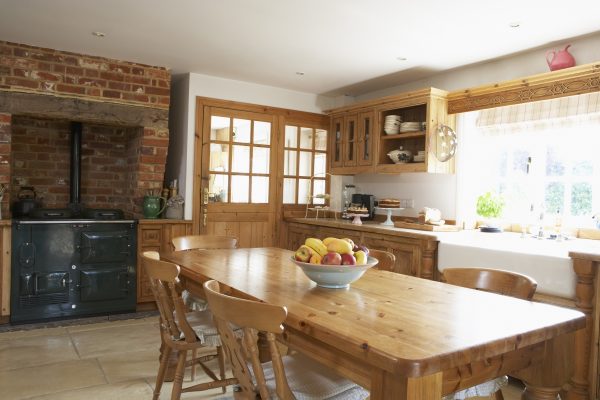


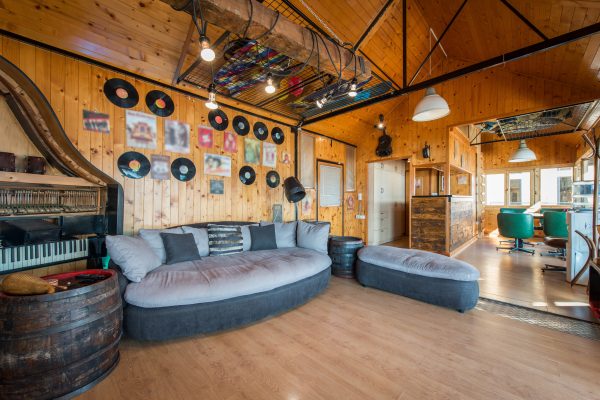

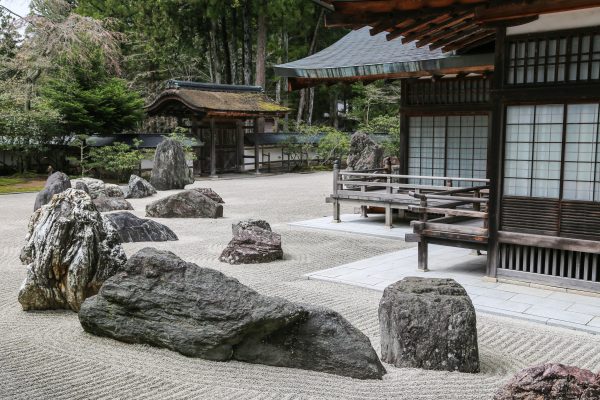
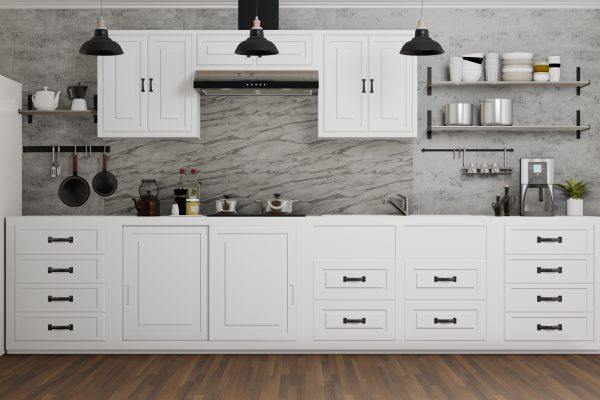





0 thoughts on “Why When I Turn My Stove Burners On Low Or Medium They Automatically Go On High”